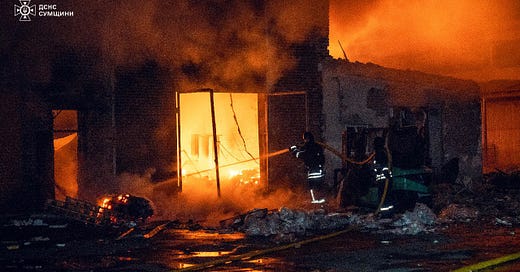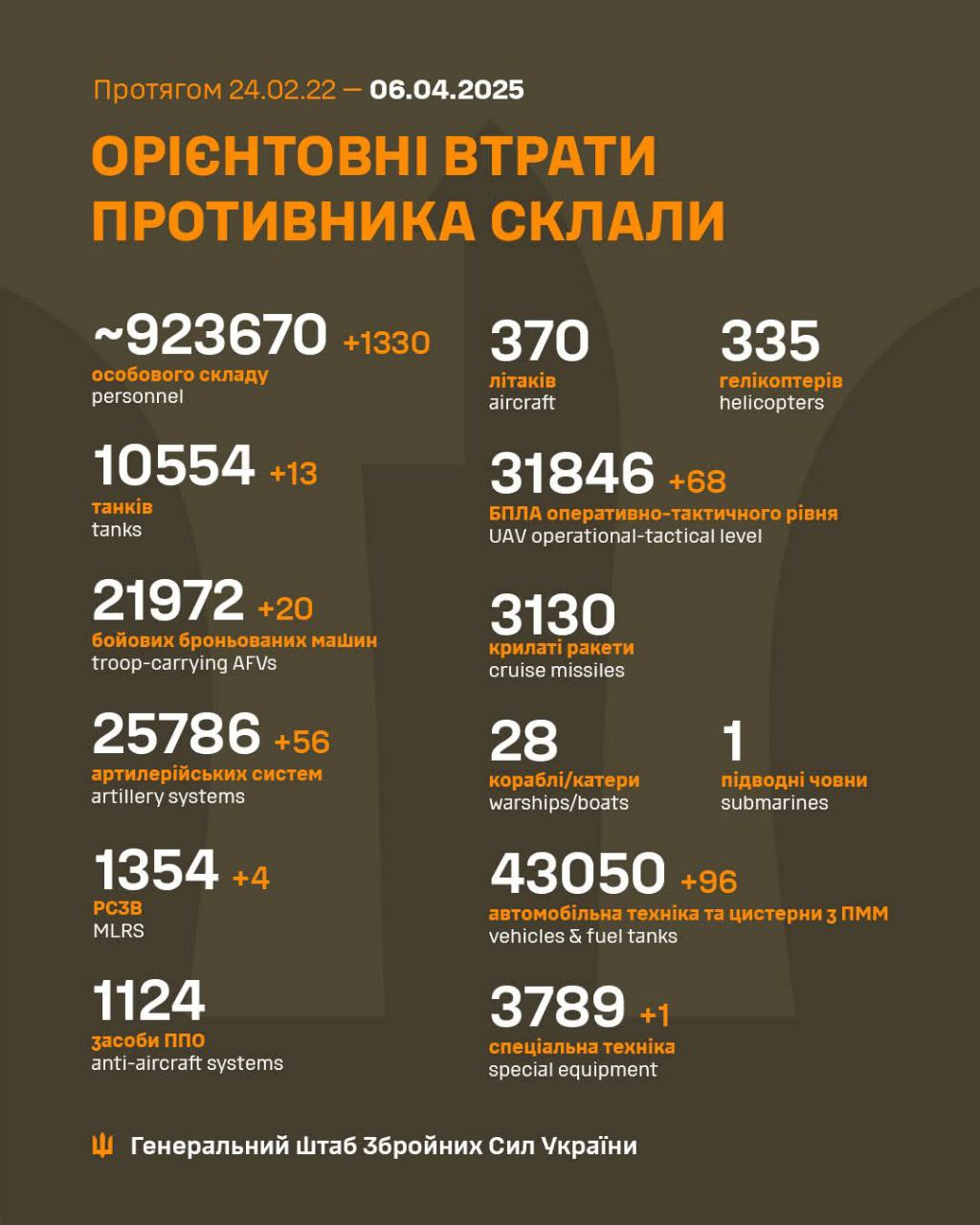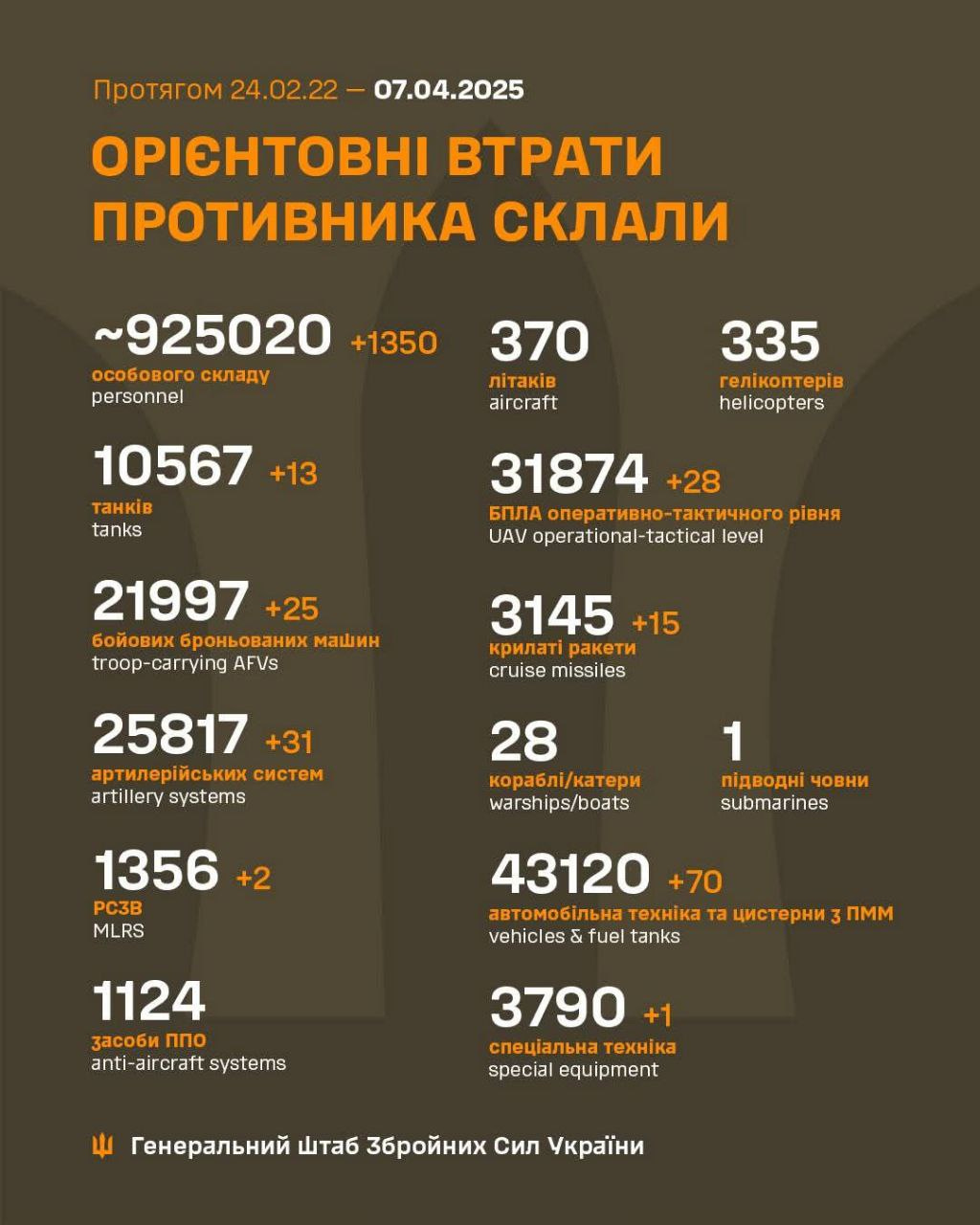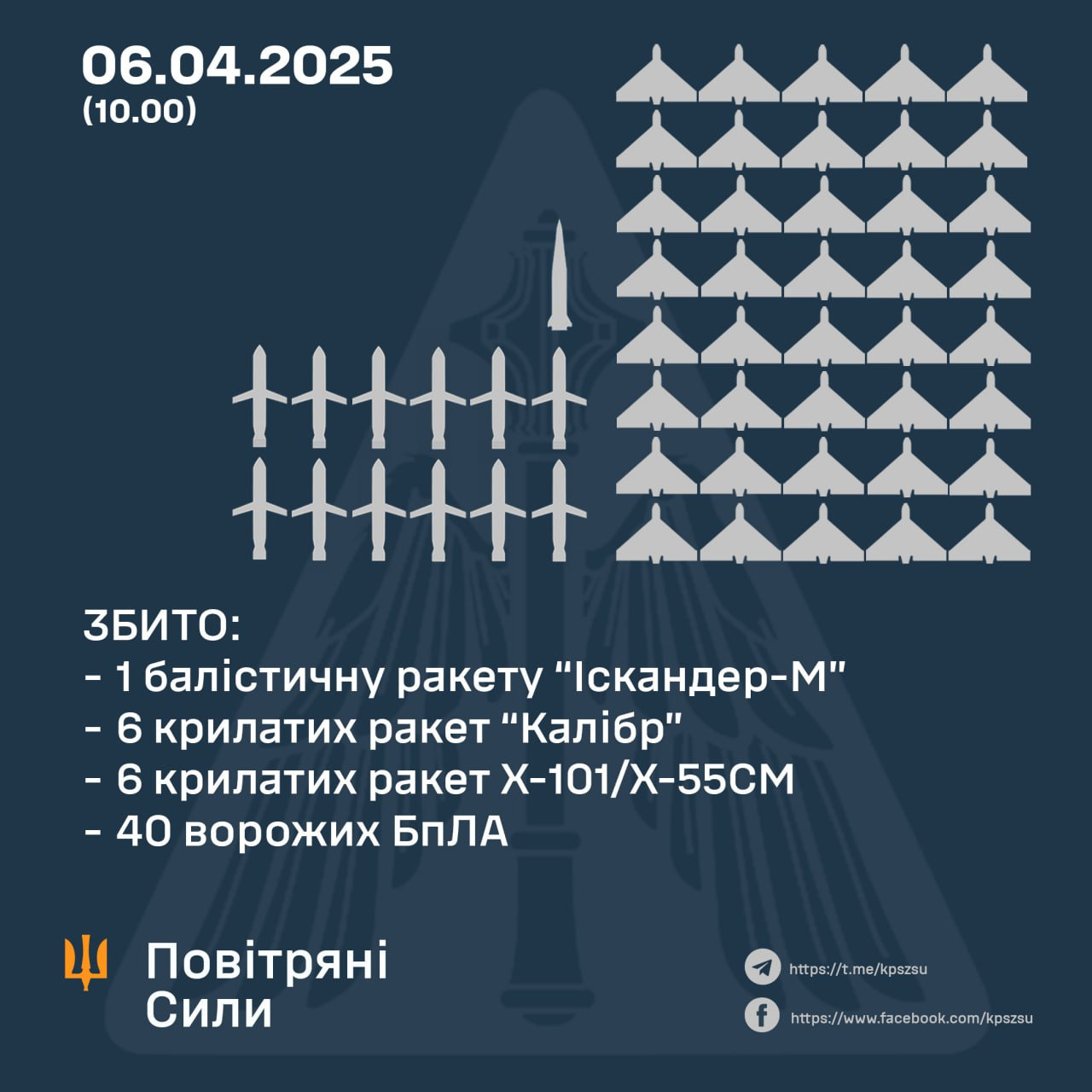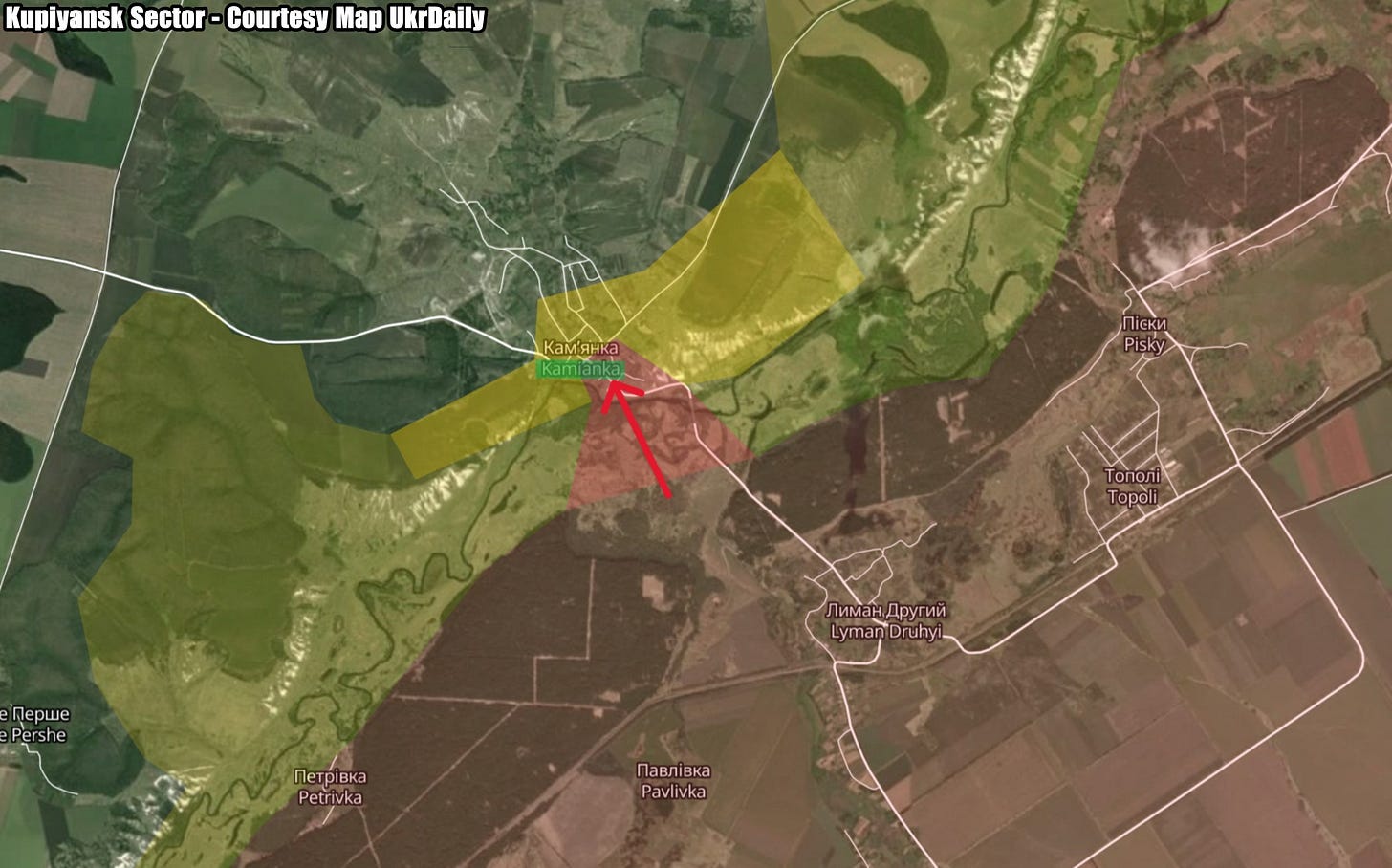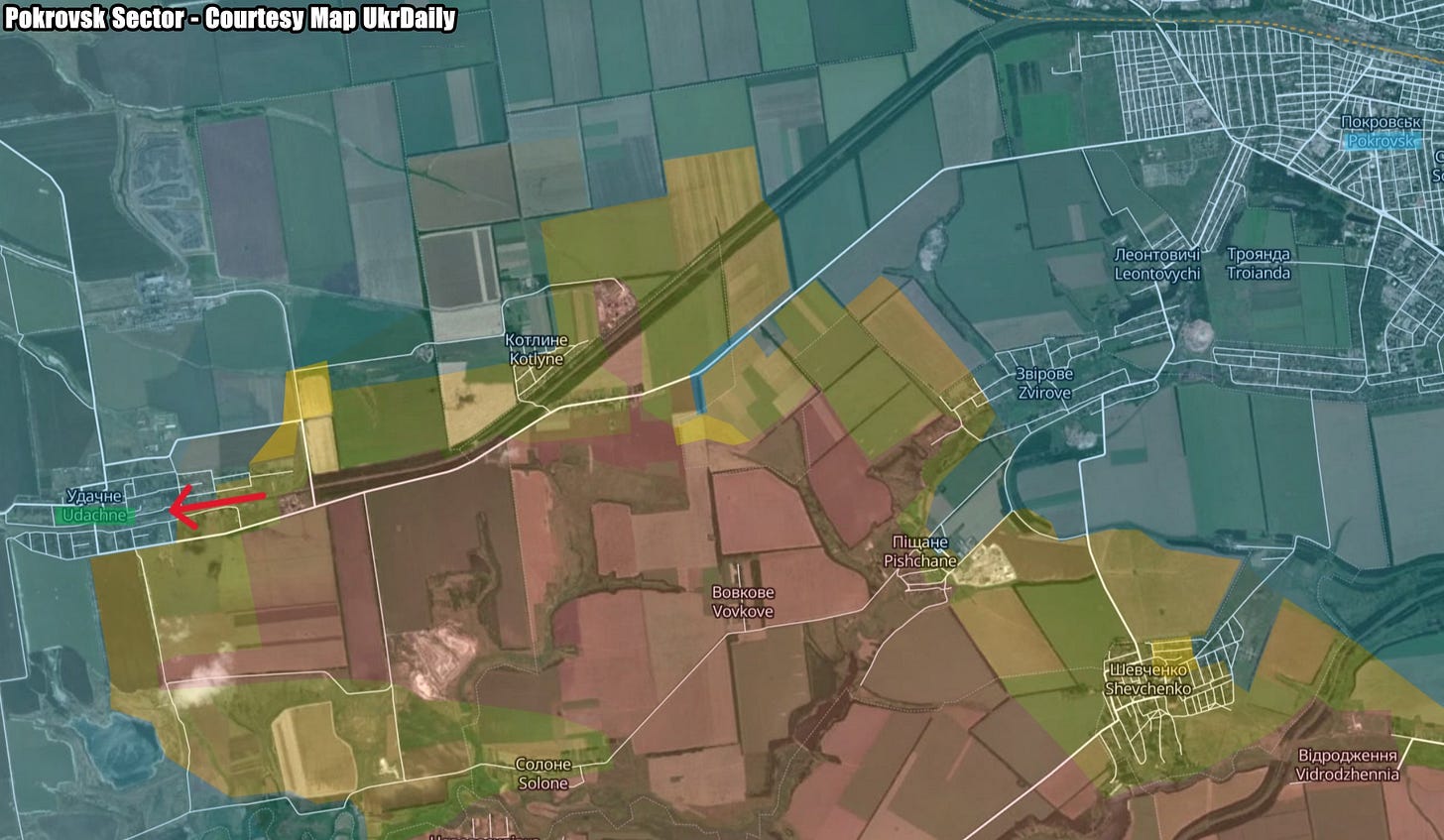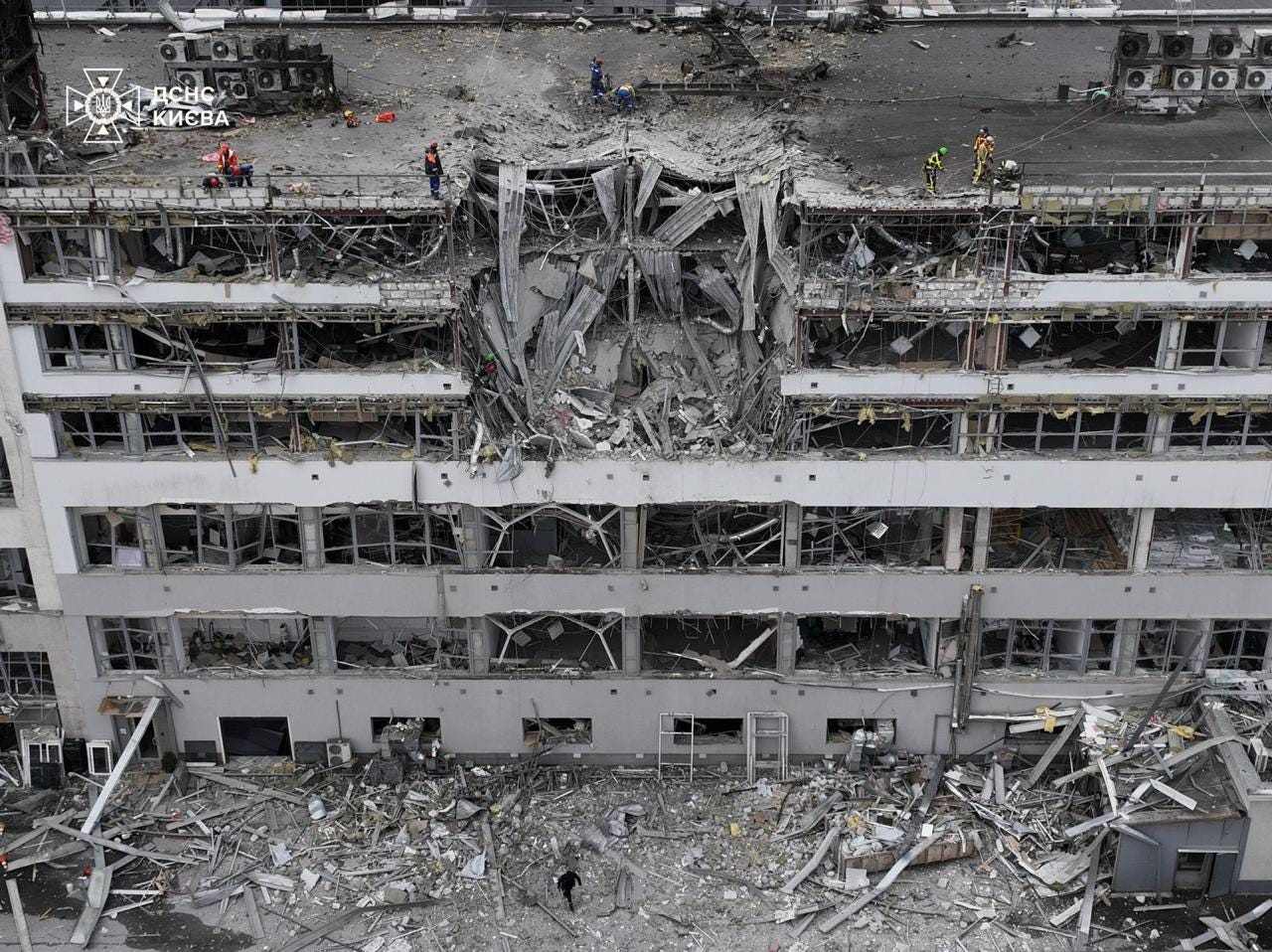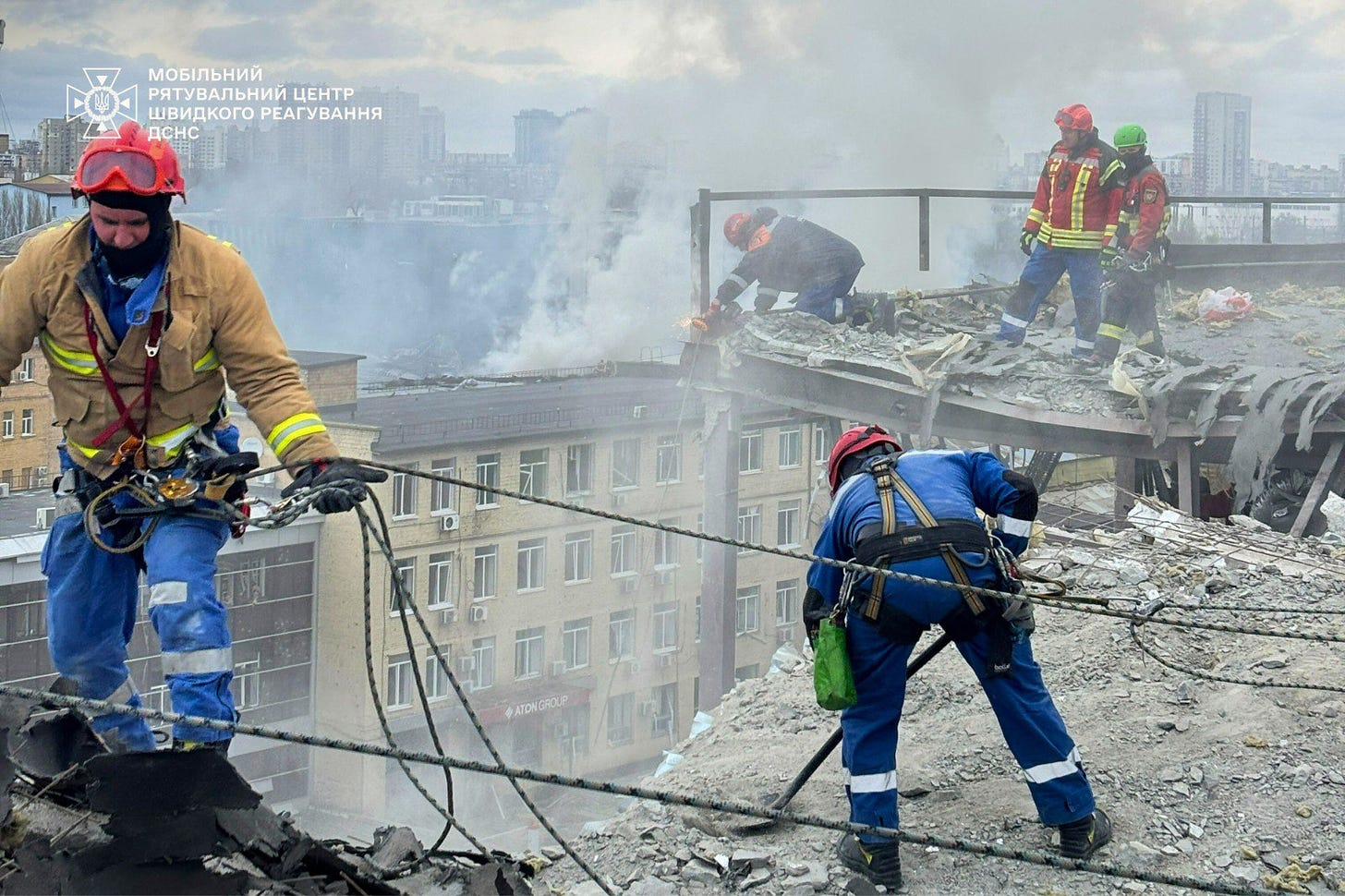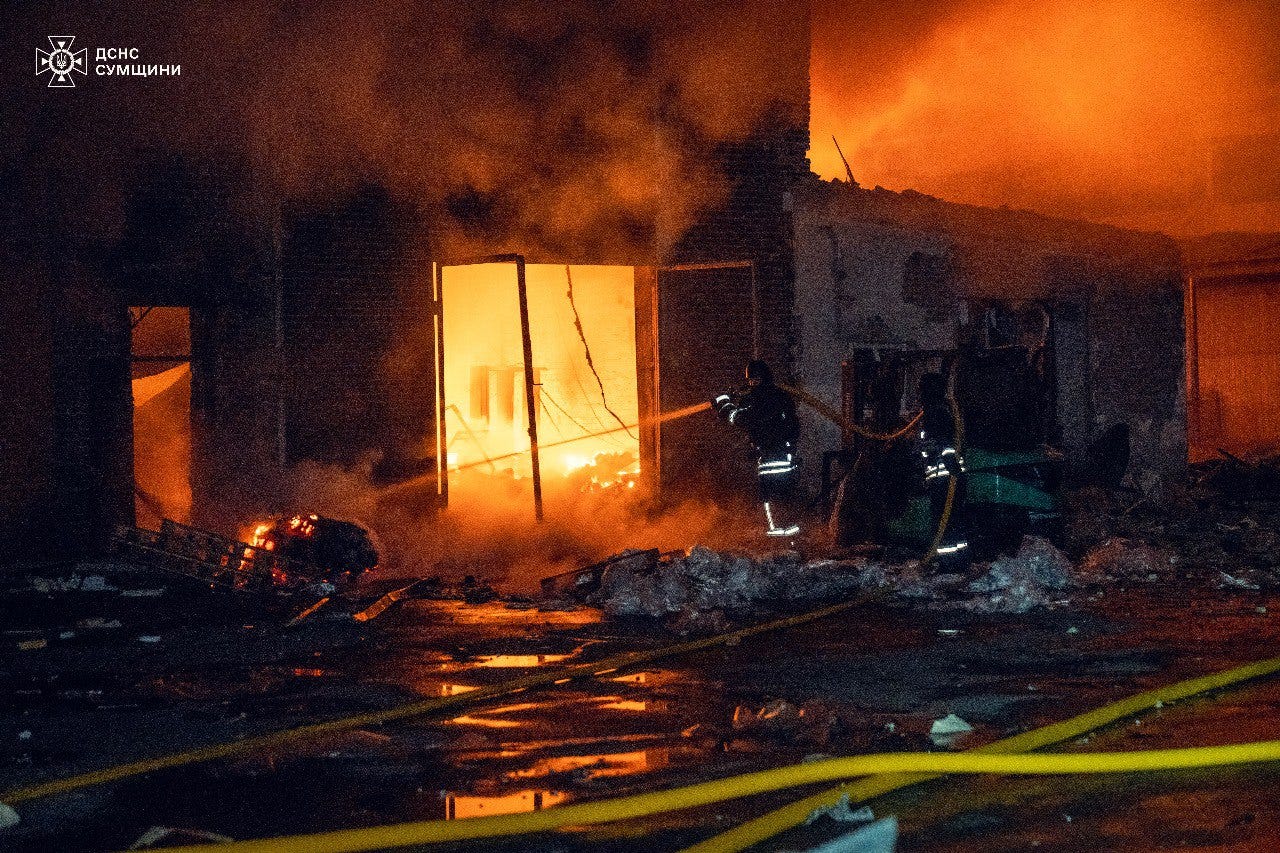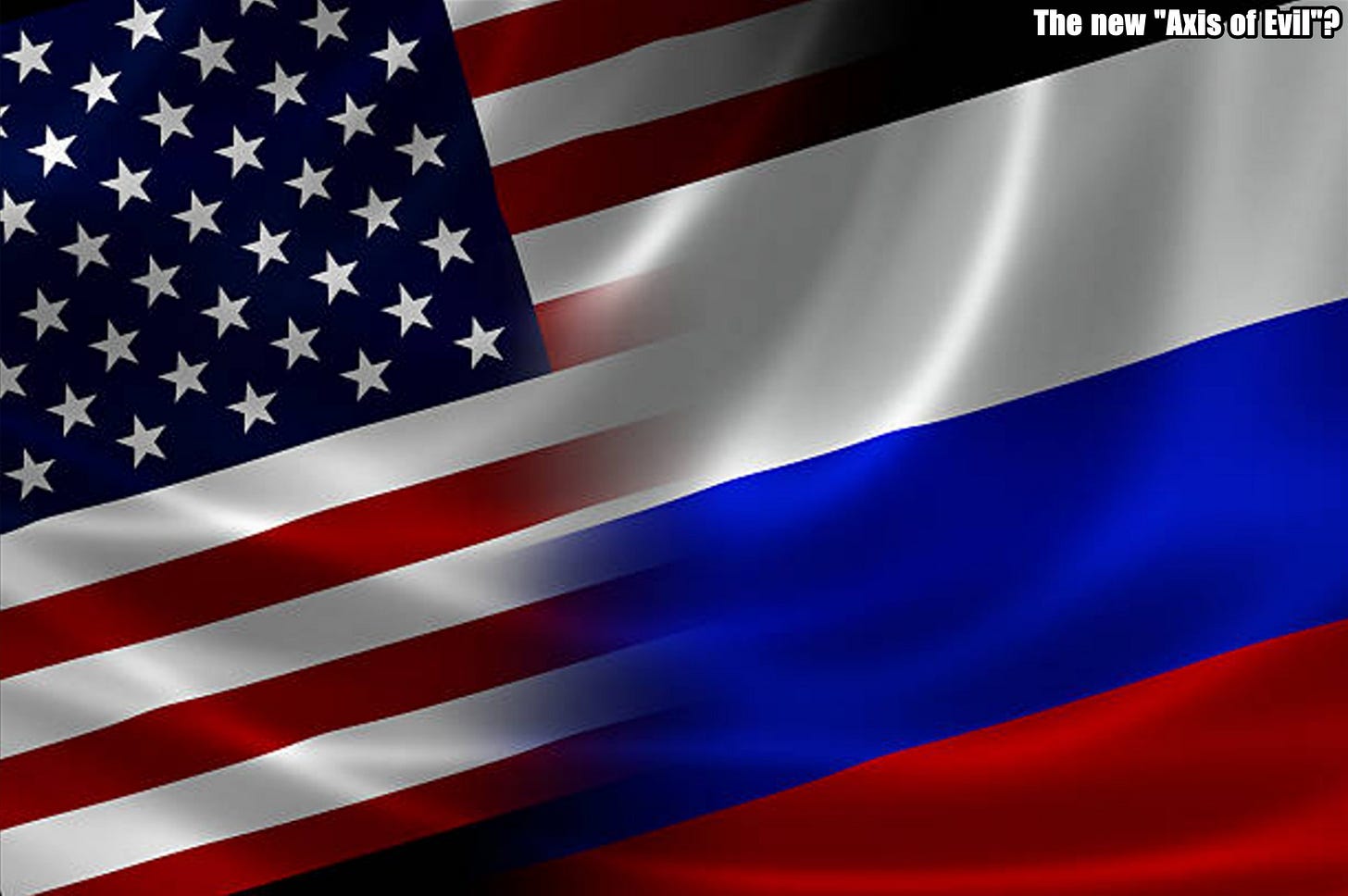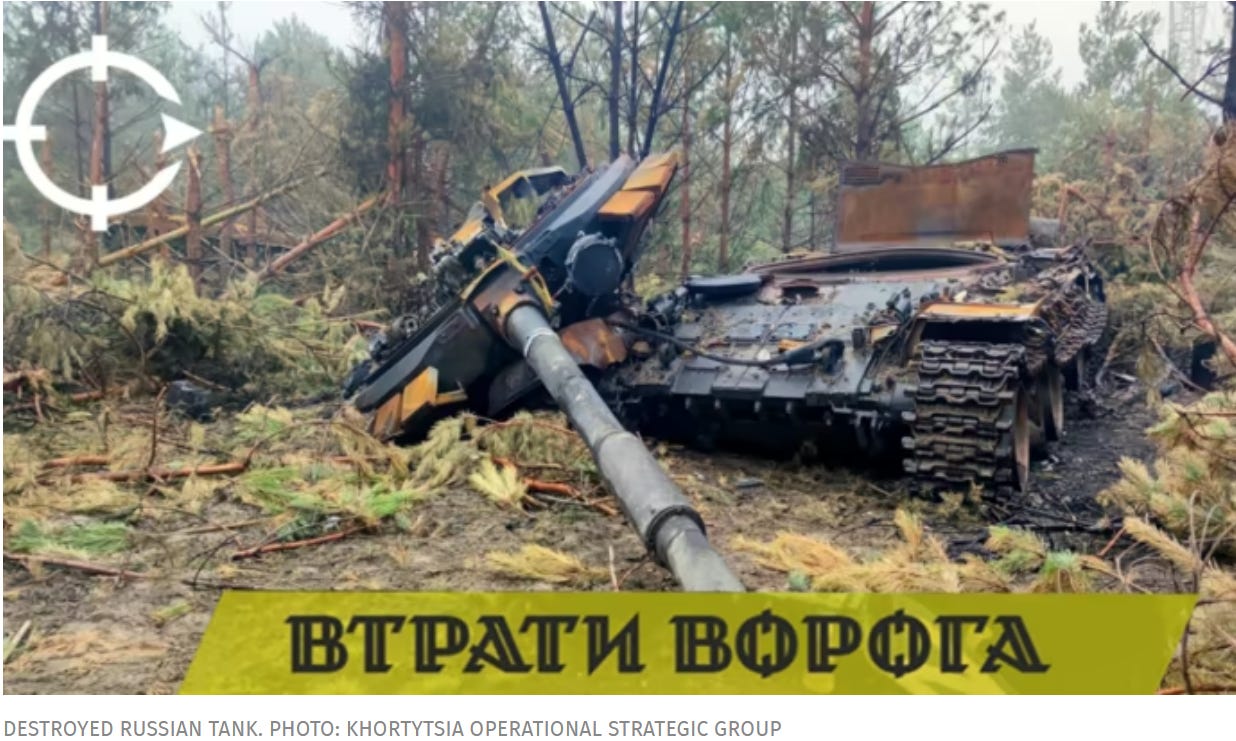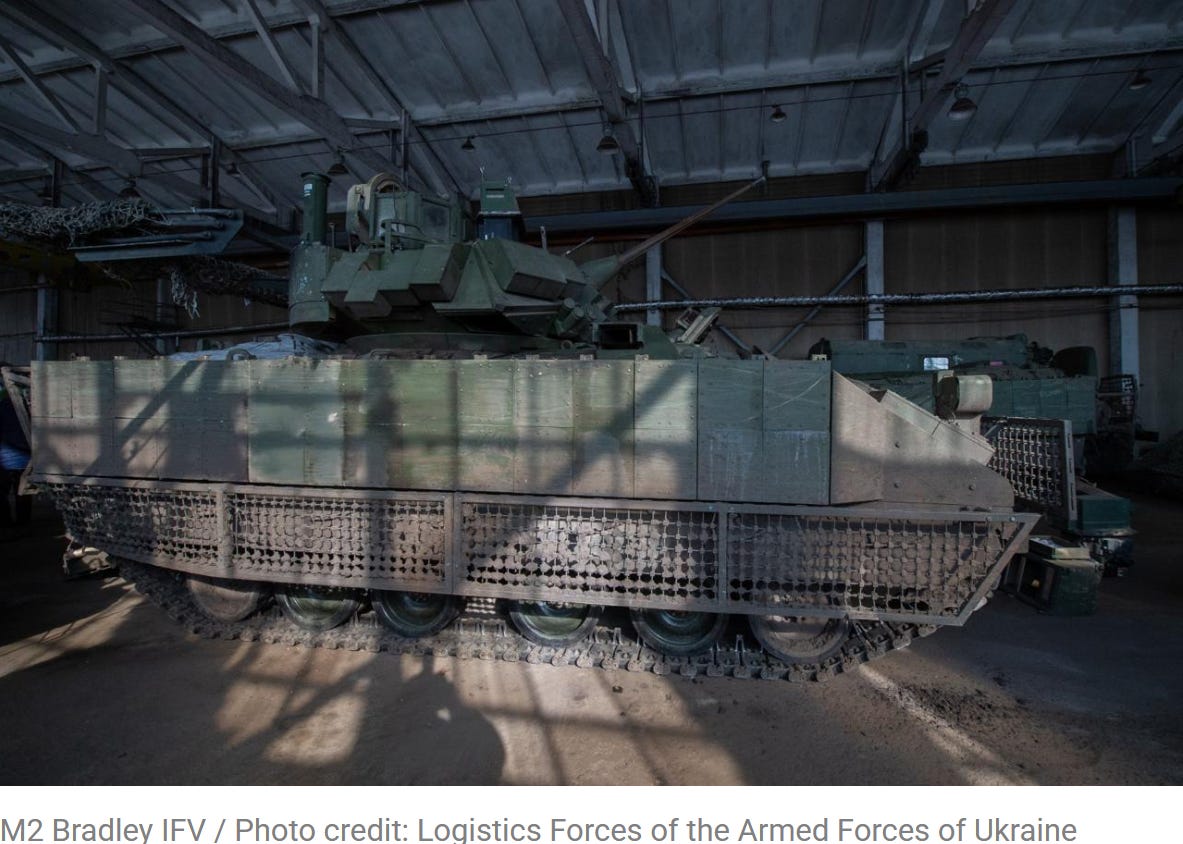Slava Ukraini! In early 2022 I began a Telegram channel aggregating news from a number of sources daily on the war in Ukraine. In June 2023 I began providing a daily draft for the Ukraine War Brief Podcast collecting news from over 70 sources daily, which formed the basis of the script. While the Podcast no longer exists I have continued to make this Brief available for my followers here on Substack for those who wish to keep up with the news from the war.
All the latest news on the Russo-Ukraine War 6 days per week
ALONG THE CONTACT LINE
GSAFU Morning Report
For: Apr 7, 2025
The General Staff of the Armed Forces of Ukraine in its Operational Information update at 08:00 on Apr 7 stated that day 1139 of the full-scale invasion of the Russian Federation against Ukraine had begun.
The situation on the line of combat remains tense in some sectors. Ukrainian defenders continue to actively counteract the Russian aggressor, causing them significant losses in personnel, equipment and technology. Exhausting the enemy along the entire front line and continuing to disrupt the plans of Russian occupiers to advance deeper into the territory of Ukraine.
During the past two days, 343 combat engagements took place.
Over the past 48 hours, the enemy carried out 23 missile strikes, 189 air strikes, used 4,349 drones and fired approximately 11,600 artillery shells across the positions of Ukrainian forces and civilians.
Air Force Daily Report
13 MISSILES AND 40 ENEMY UAVS SHOT DOWN, 53 SIMULATOR UAVS FAILED TO REACH THEIR TARGETS (LOCATIONALLY LOST)
➖➖➖➖➖➖➖➖➖
On the night of April 6, 2025, the Russian occupiers carried out a combined strike on Ukraine with air-, ground-, and sea-based missiles and strike UAVs.
According to preliminary data, the Air Force radio-technical troops detected and escorted 132 enemy air attack vehicles — 23 missiles of various types and 109 strike UAVs (simulator drones of other types), including:
- 9 Kh-101/Kh-55SM cruise missiles (launched from Tu-95MS aircraft from the airspace of the Saratov region - Russia);
- 8 "Caliber" cruise missiles (launches from the Black Sea);
- 6 Iskander-M ballistic missiles (launch area Bryansk region - Russia);
- 109 Shahed attack UAVs and other types of simulator drones (launch areas – Bryansk, Millerovo, Primorsko-Akhtarsk, Kursk — Russian Federation; Chauda — Crimea).
The enemy air attack was repelled by aviation, anti-aircraft missile units, electronic warfare equipment, and mobile fire groups of the Defense Forces of Ukraine.
As of 10:00, the downing of 53 air targets has been confirmed:
- 6 Kh-101/Kh-55SM cruise missiles;
- 6 Caliber cruise missiles;
- 1 Iskander-M ballistic missile;
- 40 Shahed attack UAVs.
53 enemy drones-simulators - lost in location (without negative consequences).
As a result of the enemy attack, the Kyiv, Sumy, Kharkiv, Khmelnytskyi, Cherkasy, and Mykolaiv regions suffered.
During the week (from 31.03.25 to 06.04.25), the air defense of the Defense Forces destroyed 481 air targets:
▪️ 6 Kh-101/Kh-55SM cruise missiles;
▪️ 6 "Caliber" cruise missiles;
▪️ 1 Iskander-M ballistic missile;
▪️ 2 Kh-59/69 guided aircraft missiles;
▪️ 257 Shahed attack UAVs;
▪️ 106 reconnaissance UAVs;
▪️ 103 UAVs of other types.
Air Force aviation carried out about 100 flights during the week, including:
▪️ over 50 – for fighter air cover;
▪️ about 30 – for fire damage and air support of troops.
Air Force pilots carried out dozens of airstrikes on enemy positions, using various types of aerial bombs and missiles. Command posts, logistical facilities, and locations where enemy manpower and military equipment were concentrated were hit.
During the week, the unmanned aircraft units of the Combined Rifle Brigade of the Air Force carried out 944 combat missions, of which:
▪️ 837 reconnaissance flights using UAVs;
▪️ 107 flights using drop-in and FPV drones.
☠️ As a result, the enemy's combat losses were approximately:
▪️ over 35 people;
▪️ 6 enemy shelters;
▪️ 4 units of automotive equipment.
Combat Operations in the Russian Federation
The Institute for the Study of War (ISW), a US based think tank, in its Apr 6 Russian Offensive Campaign Assessment reported that:
Kursk Salient: Russian forces recently advanced in Kursk and Sumy oblasts amid continued fighting in the Kursk-Sumy Oblast border area on April 6.
Geolocated footage published on April 5 and 6 indicates that Russian forces recently advanced in northeastern Guyevo, Kursk Oblast (south of Sudzha) and southern Basivka, Sumy Oblast (northeast of Sumy City).
The Khortytsia operational-strategic group
(Responsible for the northeastern part of Ukraine. )
Kupyansk Sector: Russian forces recently advanced in the Kupyansk direction.
Geolocated footage published on Apr 5 indicates that Russian forces recently advanced in southern Kamyanka (northeast of Kupyansk near the international border).
Borova Sector: Ukrainian forces recently advanced in the Borova direction.
Geolocated footage published on Apr 5 indicates that Ukrainian forces recently advanced west of Makiivka (southeast of Borova).
Toretsk Sector: Russian forces recently advanced in the Toretsk direction.
Geolocated footage published on April 5 indicates that Russian forces recently advanced along Enhelsa Street in northern Toretsk.
The Tavria operational-strategic group
(Responsible for the central-eastern and southeastern part of Ukraine.)
Pokrovsk Sector : Russian forces recently advanced in the Pokrovsk direction.
Geolocated footage published on April 6 indicates that Russian forces recently advanced along Skhidna Street in northeastern Udachne (southwest of Pokrovsk).
Kurakhove Sector: Russian forces recently advanced in the Kurakhove direction.
Geolocated footage published on April 6 indicates that Russian forces recently advanced north of Andriivka (west of Kurakhove).
The Odesa operational-strategic group
(Responsible for Kherson, Qırım, (also known as Crimea) and the Black Sea.)
There have been no major changes to the combat environment since our last report.
TEMPORARILY OCCUPIED TERRITORIES
Nothing major to report.
THE HOME FRONT
Russia attacked Ukraine with 23 missiles, 109 drones on Apr 6, Air Force reports.
Russian troops attacked Ukraine with 23 missiles and 109 drones overnight on Apr 6, the Kyiv Independent reported citing Ukraine's Air Force.
The overnight attack targeted Kyiv, Sumy, Kharkiv, Khmelnytskyi, Cherkasy, and Mykolaiv oblasts, according to the Air Force's report on Telegram. Kyiv's local authorities reported in the morning that one person was killed and three were injured.
Ukraine was able to shoot down six of the nine Kh-101, Kh-55, and Kalibr cruise missiles launched at the country, as well as six of the eight Kalibr cruise missiles, and one of the six Iskander-M ballistic missiles, according to the Air Force.
Of the 109 drones launched at Ukraine, the Air Force said that it had shot down 40 Shahed combat drones, and another 53 decoy drones disappeared from radars without causing any damage.
Russia hit Kyiv with a missile strike at dawn, killing one person and injuring two or three others. Fires broke out in multiple districts:
The strike damaged structures across three districts of the Ukrainian capital. In the Darnytskyi district, three people were injured, with two requiring hospitalization.
Ukraine’s State Emergency Service confirmed the attack was carried out with a ballistic missile. The damage includes:
In Darnytskyi district: A fire at one building and “the building was destroyed and three nearby parked cars caught fire,” according to rescuers
In Obolonskyi district: A fire at a furniture workshop that spread to a warehouse, and the upper floors of a 5-story business center were partially destroyed
In Solomianskyi district: Multiple open-area fires and damage to a warehouse building façade.
Russia has regularly targeted civilian infrastructure since the onset of its full-scale war against Ukraine in February 2022.
The U.S. has been in talks with Ukraine and Russia to negotiate an end to Russia's war against Ukraine.
Ukraine has already agreed to a U.S.-proposed full 30-day ceasefire, saying on March 11 that Kyiv is ready if Russia also agrees to the terms. So far, Moscow has refused.
RUSSIAN WORLD
Russian Markets Reel From Trump Tariffs, Oil Price Collapse.
Russia’s stock market has suffered its worst week in more than two years in response to U.S. President Donald Trump’s sweeping global tariffs and a drop in global oil prices, the Moscow Times reports.
The market capitalization of companies listed on the Moscow Exchange (MOEX) fell by 2 trillion rubles ($23.7 billion) over just two days, sliding from 55.04 trillion rubles ($651.8 billion) at Wednesday’s close to 53.02 trillion ($627.9 billion) by the end of trading Friday, according to exchange data.
The MOEX Russia Index, which tracks 43 of Russia’s largest publicly traded companies, lost 8.05% over the week — its worst performance since late September 2022, when markets were rattled by the Kremlin’s announcement of mass mobilization for the war in Ukraine.
At the end of trading on Friday, shares in some of the country’s largest firms had plunged: Sberbank fell by 5.2%, Gazprom 4.9%, VTB 6%, Rosneft 3.9% and Lukoil 4.6%. Mechel, the steel and coal giant, dropped more than 7%, while flagship airline Aeroflot slid 4.8% and gas producer Novatek fell 5.4%.
“A massive crisis is unfolding before our eyes,” said Yevgeny Kogan, an investment banker and professor at the Higher School of Economics in Moscow.
Analysts at J.P. Morgan have raised the odds of a global recession to 60% following Trump's tariffs.
The tariffs have caused prices for raw materials to fall, with Brent crude dropping 12% over the past two days, briefly hitting $64.06 a barrel — its lowest level since April 2021. Copper futures fell 11% over the same period.
In the U.S., the S&P 500 fell over 10% between Wednesday and Friday. European stock exchanges closed down 4-5% on Friday after China retaliated to Trump's tariffs with a 34% tariff on all U.S. goods.
The consequences of a global trade war — including lower energy prices, an increase in import costs and renewed inflationary pressures — would acutely impact Russia, a country heavily reliant on commodity exports, said Yelena Kozhukhova, an analyst at Veles Capital in Moscow.
MOEX has shed 17% of its value since mid-February, and shares of major firms have fallen in double-digit percentages: Gazprom by 30%, Norilsk Nickel by 25% and Rosneft by 28%.
Russian Urals crude, the country’s key export blend, is now trading below $60 per barrel. These prices signal problems with the state budget and a likely devaluation of the ruble devaluation in the coming months, Kogan said.
“Progress in the peace talks could save the situation, but that is yet to be seen,” he said.
A visit by Kirill Dmitriev, head of the Russian Direct Investment Fund, to Washington on Thursday did not appear to advance talks on ending the war in Ukraine.
“President Trump is not going to fall into the trap of endless negotiations about negotiations,” U.S. Secretary of State Marco Rubio said on Friday. “We will know soon enough — in a matter of weeks, not months — whether Russia is serious about peace or not.”
Yet NATO officials see no signs that Moscow is preparing to compromise.
“We see no indication that Russia’s objectives in this war have changed,” a senior alliance official said Thursday during a closed briefing.
RELATED INTERNATIONAL NEWS
79% of US Republican voters oppose aid to Ukraine.
The majority of Republican voters oppose aid to Ukraine, while the majority of Democrats are in favour the Wall Street Journal reports.
According to the data, 79% of Republicans opposed the continuation of financial assistance to Ukraine in its confrontation with Russia. At the same time, 83% of Democrats support further support for Kyiv. Overall, among all respondents, 49% were in favour of extending the aid, while 44% were against it.
The publication notes that these results reflect the positions of party leaders: The 46th Democratic President Joe Biden has repeatedly stated his readiness to support Ukraine "as long as it takes", while incumbent President Donald Trump and his supporters propose to move to the role of mediator in negotiations with Russia instead of continuing to provide assistance.
The study also noted a significant difference in views on the role of international alliances.
81% of Republicans believe that US allies should take care of their own security and that the United States should not spend its own resources on this. While 83% of Democrats agree with the statement that international alliances are a source of US strength and should be funded from the state budget.
"The differences between the two political parties over American foreign policy have grown into an abyss," the publication concludes.
As noted, the survey was conducted by phone among 1,500 registered voters between 27 March and 1 April. The margin of error is about 2.5%.
Macron - While we seek ways for peace, Russia continues to disregard civilian lives.
French President Emmanuel Macron expressed condolences to Ukrainians following a deadly Russian missile strike on Kryvyi Rih on Apr 4 that claimed the lives of 20 people, including 9 children. Euromaidan Press reports.
This comes as Ukrainian President Volodymyr Zelenskyy publicly criticized US Ambassador Bridget Brink’s “weak” response to a Russian missile strike that devastated his hometown, Kryvyi Rih. In her post, Brink failed to directly attribute responsibility to Russia. Zelenskyy argued that failing to explicitly assign blame to Russia emboldens further aggression and undermines diplomatic efforts.
In a message posted on the Twitter, Macron addressed Ukrainians in their own language on their day of national mourning.
He highlighted the contrast between Russia attacking civilians in the night and Ukraine’s diplomatic stance, noting that Ukraine had accepted US President Donald Trump’s proposal for a “complete and unconditional 30-day ceasefire” nearly a month ago.
The French leader emphasized that despite ongoing international efforts toward peace, Russia escalated its military operations “with increasing intensity, disregarding the civilian population.”
Macron called for an immediate end to Russian strikes and the swift implementation of a ceasefire. He warned that if Russia continues to delay and reject peace initiatives, “decisive measures must be taken.”
White House - Russia excluded from US tariff list due to ongoing ceasefire negotiations.
White House National Economic Council Director Kevin Hassett said on April 6 that Russia was excluded from the U.S. tariff list due to ongoing peace negotiations with Ukraine.
In an interview with ABC News, Hassett explained that U.S. President Donald Trump “made the decision not to conflate the two issues,” and that he is focusing on negotiations.
“It’s not appropriate to throw a new thing into these negotiations right in the middle of it. It's just not,” Hassett said.
Hassett argued that introducing new tariffs during peace talks would risk disrupting diplomatic progress.
“Would you literally advise that you go in and put a whole bunch of new things on the table in the middle of a negotiation that affects so many Ukrainian and Russian lives? No, no,” he said.
Trump’s new tariff policy, announced as part of what he called "Liberation Day," imposed duties on nearly every major U.S. trading partner, including Ukraine. Kyiv was hit with a 10% tariff, compared to 20% on the EU and 54% on China.
Russia, Belarus, North Korea, and Cuba were notably not included.
Economy Minister Yuliia Svyrydenko said that the Trump administration's latest tariffs are likely to be "difficult, but not critical" for Ukraine's economy.
Ukraine's exports to the U.S. in 2024 amounted to $874 million, including $363 million in cast iron and $112 million in pipes, Svyrydenko said on Facebook. The same year, Ukraine imported $3.4 billion worth of U.S. goods.
The White House’s decision to exclude Russia from the tariff list comes amid growing signs of diplomatic and economic engagement between Washington and Moscow.
Last week, Kremlin negotiator Kirill Dmitriev visited the United States and expressed “cautious optimism” about the future of Russian-American relations, emphasizing a focus on investment cooperation and the beginning of “respectful, good dialogue.”
MILITARY & TECH
The rate of Russian advances in Ukraine has been steadily declining since November 2024.
The Institute for the Study of War (ISW), a US based think tank, in its Apr 6 Russian Offensive Campaign Assessment reported that The rate of Russian advances in Ukraine has been steadily declining since November 2024, in part due to successful Ukrainian counterattacks in eastern Ukraine.
The UK Ministry of Defense (MoD) reported on April 5 that Russian forces advanced 143 square kilometers in Ukraine in March 2025 as Ukrainian forces conducted successful tactical counterattacks in the Pokrovsk direction. The UK MoD reported that the rate of Russian advances in Ukraine has decreased each month since November 2024, as Russian forces seized roughly 730 square kilometers in November 2024, 393 square kilometers in Dec 2024, 326 square kilometers in Jan 2025, and 195 square kilometers in February 2025.
ISW has observed geolocated footage to concur in the assessment that the monthly rate of Russian advances in Ukraine has decreased since Nov 2024. ISW has observed geolocated evidence to assess that Russian forces in Ukraine gained roughly 627 square kilometers in Nov 2024, 569 square kilometers in Dec 2024, 427 square kilometers in Jan 2025, 354 square kilometers in February 2025, and 203 square kilometers in Mar 2025.
The UK MoD likely uses a different methodology or sources to assess Russian advances in Ukraine, but the UK MoD's report is consistent with evidence ISW has observed of decreasing monthly Russian advances between November 2024 and March 2025. Ukrainian forces have conducted localized counterattacks in the Pokrovsk and Toretsk directions in recent weeks, regaining lost positions in these areas and contributing to slowing Russian advances in Ukraine.
Russia’s cost for one square kilometre of Ukrainian land revealed.
Khortytsia Operational Strategic Group has calculated that in the first three months of 2025, Russia spent an average of 146 soldiers, one tank, two armoured combat vehicles and four and a half artillery pieces per square kilometre of Ukrainian territory, Ukrainska Pravda revealed.
The calculations are based on the losses sustained by Russian forces on the eastern front alone, within the area of responsibility of the Khortytsia Group, during the first quarter of this year.
Ukrainian troops stressed that the Russian people are paying an enormous price for the Kremlin’s ambitions.
Russia Admits M2 Bradley’s Superiority over BMP-3.
Russian conducted tests on a captured M2A2 ODS SA infantry fighting vehicle, and the results have now surfaced online. The 38th Research and Testing Institute of Armored Vehicles of the Russian Ministry of Defense concluded that the American IFV has a clear advantage over the Russian one in most key parameters, Defense Express reports.
Alongside the comparison table of the M2 Bradley and BMP-3’s tactical and technical characteristics, the detailed findings of the 38th Research and Testing Institute of the Russian Ministry of Defense were also published online. Russians admit that the American vehicle has a significant advantage in anti-munitions, anti-tank protection, and mine resistance.
This is confirmed in practice. The Ukrainian military unanimously praises the M2 Bradley's high level of protection, capable of withstanding an ATGM hit or the detonation of one or even two anti-tank mines without casualties to the crew.
Accordingly, Russia’s research draws the following conclusions: the BMP-3 should be fitted with armored screens, particularly at the front, as well as anti-tank missile launchers. There is also discussion about the need to equip the commander's cabin with armored glass for surveillance.
The Bradley infantry fighting vehicle has an advantage over the BMP-3 in terms of firepower (when comparing their respective 25-mm and 30-mm cannons). In particular, the Bradley outperforms the BMP-3 by a factor of two in both accuracy and armor penetration. At the same time, as noted by the russians, the BMP-3 has an advantage "having more readily available ammunition for the 100-mm gun and the 30-mm 2A72 automatic cannon."
The Russians also discuss the need to develop a round with dart ammunition, as well as a 30-mm autocannon, explicitly noting the necessity of "borrowing" design solutions from Western developments. Such an autocannon should ensure the "guaranteed destruction" of the latest versions of Bradley infantry fighting vehicles.
Russians also highlight the superiority of the M2 Bradley in both operational and technical characteristics (such as access to the combat compartment from the airborne compartment, maintainability, etc.) and ergonomics (including reserved space, availability of a ramp, and free access between compartments).
According to the enemy's research, their BMP-3 holds an advantage over the American vehicle in terms of dynamic range, cross-country capability, and the ability to overcome water obstacles by swimming.
Russia ramps up modern artillery production.
Russia’s defense industry has ramped up production of its latest wheeled self-propelled howitzers, Militarnyi reports.
According to the report, a recent train convoy carrying at least eight new artillery systems was spotted in Russia.
The weapons appear to include the 2S43 “Malva” and possibly the 2S44 “Hyacinth-K,” both of which are mounted on the same BAZ-6910 wheeled chassis and share multiple components.
“Footage from roughly six weeks ago shows that production of wheeled SPGs in Russia is progressing,” the outlet reported.
The chassis is produced by the Bryansk Automobile Plant and supports a relatively simplified gun assembly, allowing for faster and more scalable manufacturing compared to tracked systems like the Msta-S.
The Malva replaces the traditional 2A64 howitzer with the 2A36 “Hyacinth-B” long-range cannon, extending its reach while reducing weight and complexity.
With conventional high-explosive fragmentation rounds, the Malva can strike targets up to 30.5 kilometers away. That range increases to 33.1 kilometers when using rocket-assisted projectiles. The open-mounted gun, lacking an armored turret or shield, contributes to the system’s lighter weight—approximately 32 tons with a full load of 30 rounds—roughly 25 percent lighter than Russia’s tracked Msta-S.
The Malva project began in the early 2010s under the “Nabrosok” development program led by the Burevestnik Central Research Institute. Field trials reportedly began in 2020.
Russia’s shift toward wheeled artillery solutions likely reflects a need to streamline logistics and replace battlefield losses. Unlike tracked howitzers, wheeled systems offer faster road mobility and easier maintenance, albeit with less protection in frontline conditions.
While Russia has faced sanctions and export restrictions, its domestic military-industrial complex appears to be maintaining—if not accelerating—its artillery output. The continued rollout of systems like Malva suggests an attempt to adapt artillery doctrine and logistics to the realities of a long war.
That’s it for today’s Brief folks if you would like to keep up with events in Ukraine daily please consider subscribing, it’s free!


